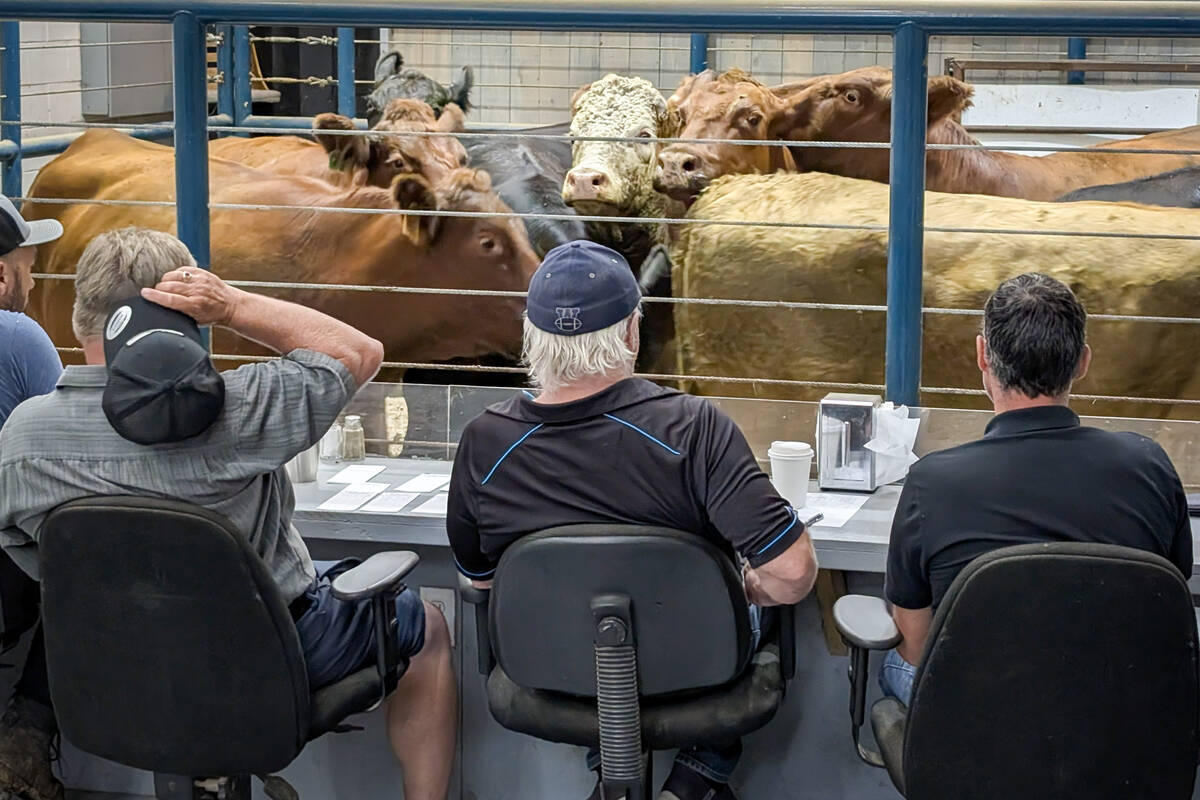Feeder cattle prices were $2 to $3 lower across Western Canada, with prices dropping an additional $1 to $2 late in the week. Steers weighing 620 pounds sold for $135 per hundredweight (cwt) in central Alberta, down $4 from a week earlier; lighter steers weighing 500 to 550 lbs. sold in the range of $138/cwt to $145/cwt in southern Alberta’s feedlot region.
There appears to be good demand for grass cattle underneath the market; however, buyers are nervous given the weakness in the fed market. Alberta slaughter cattle traded at $102.50/cwt, down $4 in comparison to early May. Fed cattle sales in the Texas Panhandle were reported at $1.08/cwt, down $4 from a week earlier.
Read Also

U.S. livestock: Cattle rally, hogs slide
Chicago cattle futures regained a ground on Monday to maintain a fairly level trajectory after last week’s fall.
The market is contending with larger-than-expected beef production while consumer spending remains sluggish. The U.S. Department of Agriculture’s cattle on feed report had May 1 total on feed numbers up seven per cent, while April placements were up 10 per cent. The report showed a large increase in light-weight feeder cattle, which was a sharp surprise, and it now looks like third- and fourth-quarter beef production will be larger than anticipated.
Despite the Victoria Day and Memorial Day long weekends, consumption patterns have not improved. Cooler temperatures across Canada and the U.S. have also resulted in lower barbecue demand, especially along the eastern seaboard.
Corn futures moved back up to historical highs last week as the market incorporates a risk premium due to the uncertainty in production. Barley fundamentals are also expected to drop to bare pipeline levels at the end of the crop year. Stronger feedgrain prices will continue to weigh on the feeder cattle market.
— Jerry Klassen is a commodity market analyst in Winnipeg and maintains an interest in the family feedlot in southern Alberta. He writes an in-depth biweekly commentary, Canadian Feedlot and Cattle Market Analysis, for feedlot operators in Canada. He can be reached by email at [email protected] or at 204-287-8268 for questions or comments.














